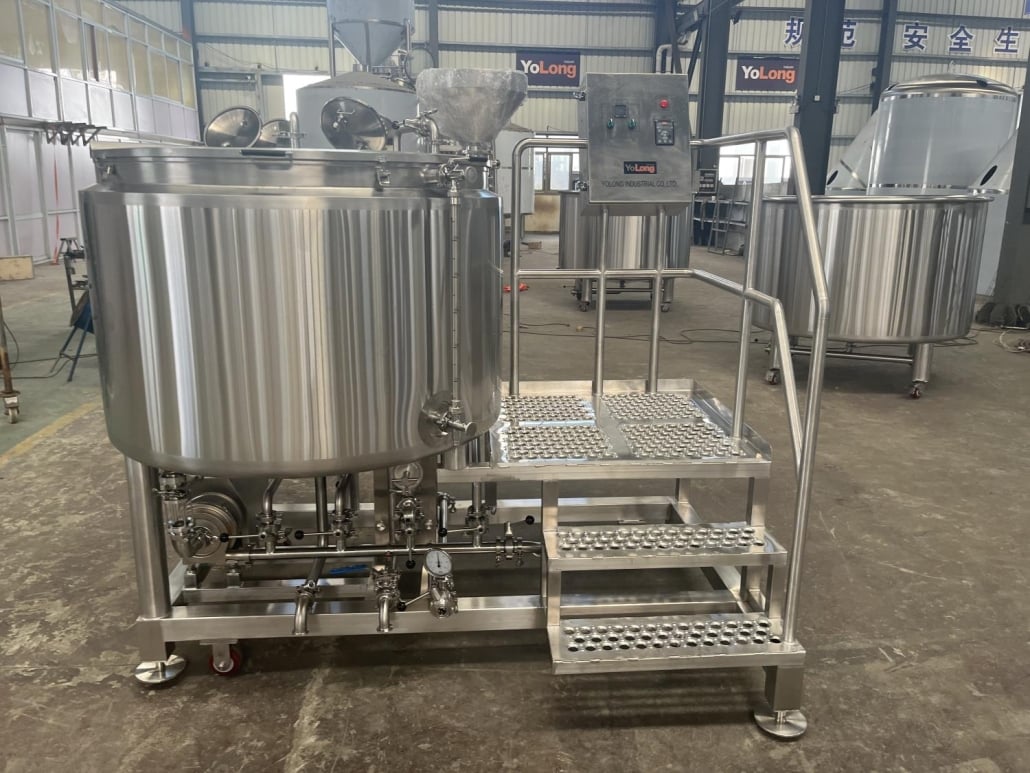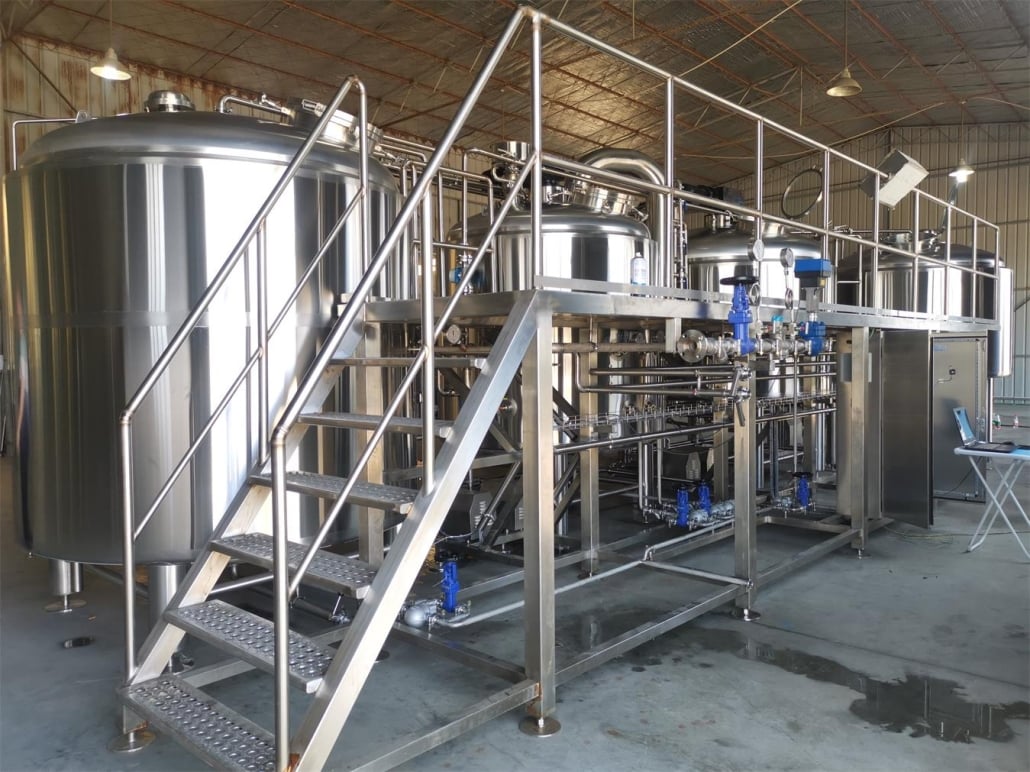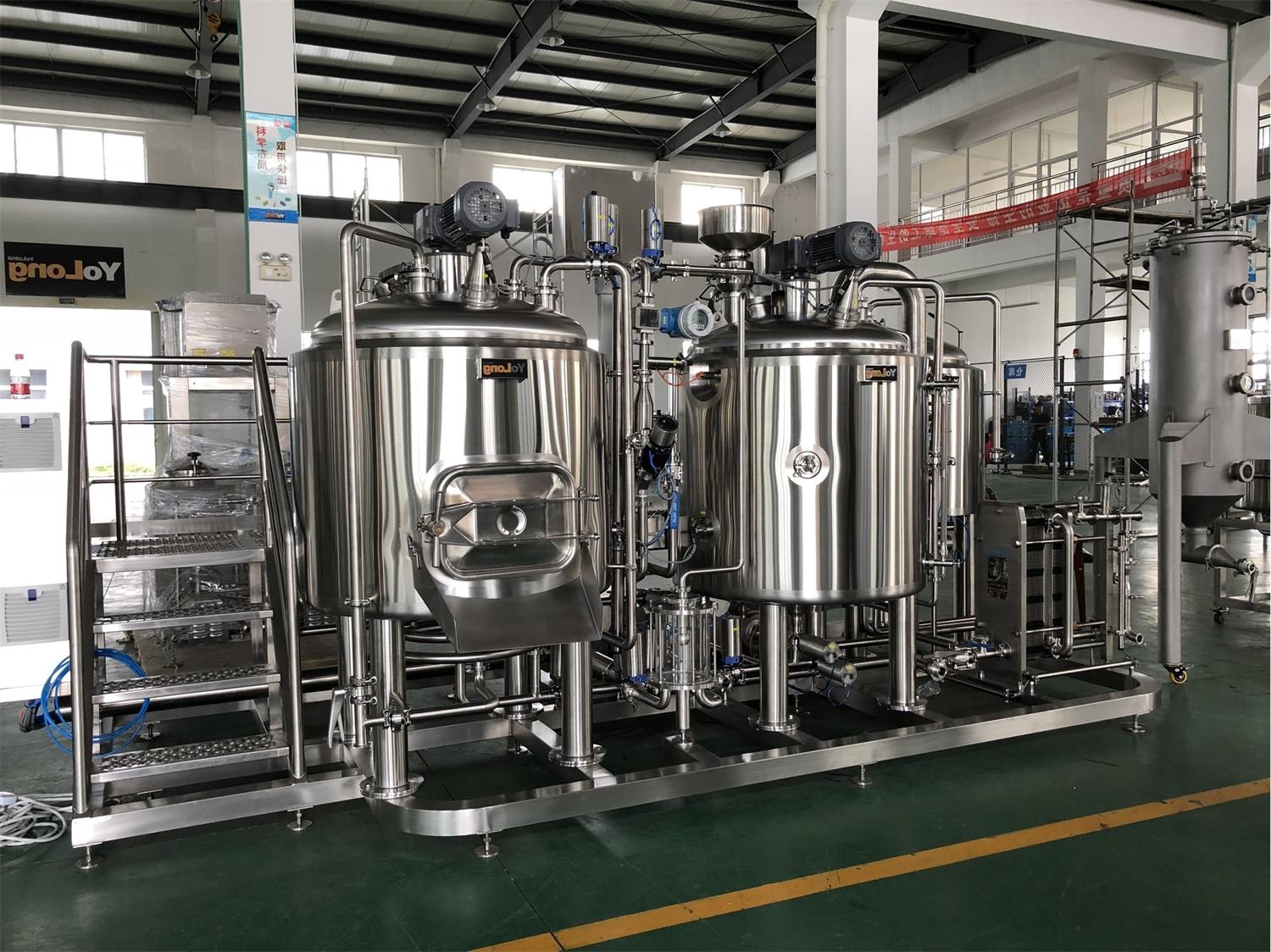Ultimate Guide to Brewery Brewhouse
Overview of Brewery Brewhouse
The brewery brewhouse is the heart of any brewing operation, serving as the central hub where the magic of transforming raw ingredients into beer happens. If you’re diving into the world of beer brewing, whether as a hobbyist or a commercial brewer, understanding the brewhouse and its components is crucial. This guide will walk you through the essentials, providing an in-depth look at the equipment, processes, and considerations involved in setting up and operating a brewhouse.
Key Components of a Brewery Brewhouse
Setting up a brewery brewhouse involves several critical pieces of equipment, each playing a unique role in the brewing process. Here’s a detailed overview of the primary components:
- Malt Mill: This equipment crushes the malted barley, preparing it for mashing by exposing the inner starches needed for fermentation.
- Mash Tun: Here, the milled grains are mixed with hot water to convert the starches into fermentable sugars, a process known as mashing.
- Lauter Tun: In this vessel, the mash is separated into the clear liquid wort and the residual grain husks.
- Boil Kettle: The wort is boiled in this kettle to sterilize it and to add hops, which provide bitterness, flavor, and aroma to the beer.
- Whirlpool: After boiling, the wort is swirled in the whirlpool to separate the solid particles from the liquid, ensuring a clear wort for fermentation.
- Heat Exchanger: This equipment cools the hot wort to a suitable temperature for fermentation by passing it through a cold water or glycol bath.
- Fermenter: In this vessel, yeast is added to the cooled wort to start fermentation, where sugars are converted into alcohol and CO2.
- Bright Tank: The fermented beer is stored in this tank for maturation and carbonation before packaging.

Equipment Guide
When choosing equipment for your brewhouse, it’s important to consider the capacity, material, and features that will best suit your needs.
| Equipment | Description | Capacity Range | Material | Special Features |
|---|---|---|---|---|
| Malt Mill | Crushes malt for mashing | 50 kg to 1000 kg/hr | Stainless Steel | Adjustable rollers, dust collection |
| Mash Tun | Converts starches to sugars with hot water | 100 L to 5000 L | Stainless Steel | Insulated jacket, mixing paddles |
| Lauter Tun | Separates wort from grain husks | 100 L to 5000 L | Stainless Steel | False bottom, sparging arms |
| Boil Kettle | Boils wort and adds hops | 100 L to 5000 L | Stainless Steel | Steam jacket, whirlpool inlet |
| Whirlpool | Clarifies wort post-boiling | 100 L to 5000 L | Stainless Steel | Tangential inlet, trub dam |
| Heat Exchanger | Cools wort rapidly post-boiling | Plate or Tube type | Stainless Steel | Counterflow or plate type |
| Fermenter | Ferments wort into beer | 100 L to 5000 L | Stainless Steel | Temperature control, pressure relief valves |
| Bright Tank | Stores and carbonates finished beer | 100 L to 5000 L | Stainless Steel | Carbonation stone, sight glass |
The Brewing Process: Step-by-Step
1. Milling the Grains
The brewing process begins with milling the malted grains. The malt mill crushes the grains, breaking up the husks and exposing the inner starches, which are essential for the mashing process.
2. Mashing
Next, the milled grains are mixed with hot water in the mash tun. This step, known as mashing, activates enzymes that convert the starches into fermentable sugars. The temperature and time are crucial variables here, influencing the beer’s final flavor and body.
3. Lautering
After mashing, the mixture, now called mash, moves to the lauter tun. Here, the wort (the liquid extracted from the mashing process) is separated from the spent grain husks. This step involves sparging, where additional water is sprayed over the grains to extract as much fermentable sugar as possible.
4. Boiling
The wort is then transferred to the boil kettle. During the boil, hops are added at various stages to impart bitterness, flavor, and aroma to the beer. Boiling also sterilizes the wort, ensuring no unwanted bacteria or wild yeast affect the fermentation.
5. Whirlpooling
Post-boiling, the wort is moved to the whirlpool. This process creates a centrifugal force that separates the solid particles, known as trub, from the clear wort, which is crucial for achieving a bright beer.
6. Cooling
The clear wort is then rapidly cooled using a heat exchanger. This step is vital to prevent contamination and to bring the wort to a temperature suitable for fermentation.
7. Fermentation
The cooled wort is transferred to the fermenter, where yeast is added. During fermentation, yeast converts the fermentable sugars into alcohol and carbon dioxide. This stage can last from a few days to several weeks, depending on the beer style.
8. Conditioning
Once fermentation is complete, the beer is moved to a bright tank for conditioning. Here, it is carbonated and matured, allowing the flavors to develop and stabilize before packaging.
9. Packaging
Finally, the beer is packaged into bottles, cans, or kegs for distribution and consumption.
Brewhouse Design and Layout Considerations
When designing a brewhouse, several factors need to be considered to ensure efficiency, safety, and scalability.
| Aspect | Details |
|---|---|
| Space Requirements | The brewhouse should have enough space to accommodate all equipment and allow easy movement. |
| Layout Efficiency | Equipment should be arranged to facilitate a smooth workflow, minimizing the need for excessive movement. |
| Scalability | Design the layout with future expansion in mind, ensuring you can add more tanks or equipment as needed. |
| Safety | Ensure there are proper ventilation, non-slip flooring, and easy access to emergency exits. |
| Customization | Tailor the design to your specific brewing needs, whether focusing on a particular beer style or brewing method. |
Capacity and Space Considerations
Choosing the right capacity and space for your brewhouse is crucial for meeting production goals and ensuring smooth operations.
| Capacity | Suitable For | Space Requirements |
|---|---|---|
| 100-500 L | Homebrewing or small-scale production | Small dedicated room or large kitchen |
| 500-1000 L | Microbreweries | Medium-sized commercial space |
| 1000-5000 L | Small to medium-sized breweries | Large industrial space |
| 5000+ L | Large commercial breweries | Extensive industrial facility |
Design and Customization
Brewhouse design should be tailored to your specific needs, focusing on the type of beers you plan to brew and your production goals.
| Design Aspect | Considerations |
|---|---|
| Mash Tun Size | Larger mash tuns allow for brewing larger batches, but require more space and energy. |
| Kettle Design | Kettles with steam jackets are more efficient but costlier compared to direct-fired kettles. |
| Tank Customization | Customizing tanks with additional ports or fittings can improve flexibility and ease of use. |
| Automation | Implementing automation in processes like temperature control and cleaning can increase efficiency and consistency. |
Supplier and Price Range
Choosing the right supplier and understanding the price range for brewhouse equipment is essential for budgeting and ensuring quality.
| Supplier | Price Range | Specialties |
|---|---|---|
| Blichmann Engineering | $10,000 – $50,000 | High-quality homebrewing and small-scale brewing equipment |
| Ss Brewtech | $20,000 – $100,000 | Innovative and modular brewing systems for various scales |
| BrauKon | $50,000 – $500,000 | Custom-designed brewing systems for medium to large breweries |
| GEA | $100,000 – $1,000,000+ | Comprehensive brewing solutions, including turnkey installations for large-scale operations |
Installation, Operation, and Maintenance
Proper installation, operation, and maintenance of your brewhouse equipment ensure longevity and optimal performance.
| Aspect | Details |
|---|---|
| Installation | Professional installation is recommended to ensure proper setup and adherence to safety standards. |
| Operation | Training staff on equipment operation is crucial for efficient and safe brewing processes. |
| Maintenance | Regular maintenance, including cleaning and servicing, prevents breakdowns and extends equipment life. |
Choosing the Right Supplier
Selecting the right supplier involves evaluating several factors to ensure they meet your needs and budget.
| Consideration | Details |
|---|---|
| Reputation | Look for suppliers with positive reviews and a history of delivering quality products. |
| Customization Options | Ensure the supplier can customize equipment to your specific brewing needs. |
| Support and Service | Choose suppliers who offer strong customer support and after-sales service. |
| Price vs. Quality | Balance cost with quality, ensuring you’re getting durable and efficient equipment. |
| Lead Time | Consider the supplier’s lead time to ensure they can meet your timeline for setup and production. |
Pros and Cons of Different Brewhouse Setups
Different brewhouse setups come with their own advantages and limitations, which can impact your brewing operations.
| Setup | Pros | Cons |
|---|---|---|
| Homebrewing Setup | Affordable, easy to manage, perfect for experimentation | Limited production capacity, not suitable for commercial sales |
| Microbrewery Setup | Higher production capacity, good for local sales, more equipment options | Higher initial investment, requires more space and infrastructure |
| Commercial Brewery Setup | High production capacity, scalable, supports a wide range of beer styles | Very high initial investment, complex to manage, requires significant space and resources |
| Automated Brewery Setup | Consistent quality, efficient processes, reduced labor costs | High upfront cost, requires technical expertise for setup and maintenance |

FAQ
| Question | Answer |
|---|---|
| What is a brewhouse? | A brewhouse is a facility or equipment where beer is brewed, including all the necessary tanks and machinery. |
| How much does a brewhouse cost? | The cost can range from $10,000 for small setups to over $1,000,000 for large commercial systems. |
| What equipment is essential in a brewhouse? | Essential equipment includes a malt mill, mash tun, lauter tun, boil kettle, whirlpool, heat exchanger, fermenter, and bright tank. |
| How do I choose the right brewhouse size? | Consider your production goals, available space, and budget. Smaller setups are suitable for homebrewing, while larger ones are needed for commercial production. |
| Can I automate my brewhouse? | Yes, automation can improve efficiency and consistency but involves higher initial costs and technical expertise. |
Conclusion
Setting up a brewery brewhouse is an exciting and complex endeavor. Whether you are a hobbyist looking to take your homebrewing to the next level or an entrepreneur aiming to start a commercial brewery, understanding the equipment, processes, and considerations involved is essential. By carefully planning your brewhouse layout, selecting the right equipment, and maintaining it properly, you can create a successful brewing operation that produces high-quality beer. Happy brewing!
Share this entry
Interested in learning more about Brewing Systems including additional details and pricing information? Please use the form below to contact us!
YOLONG BREWERY EQUIPMENT FAQS
- Commercial Brewery / Craft Brewery / Microbrewery / Nanobrewery
- What is The Difference Between Craft Beer and Industrial Beer?
- The Bespoke Differences In Custom Brewing Systems
- Everything You Need to Know About Kettle Souring
- How to Choose Brewing Equipment for Your business?
- How To Choose The-Best Partner To Build Your Commercial Microbrewing System?
- Two Detection Sensors That You Need To Use In Your Brewhouse System
- Remote Control Applications in Brewing Equipment/How does it work?
- How To Clean Your Brand New Brewery Tanks?

